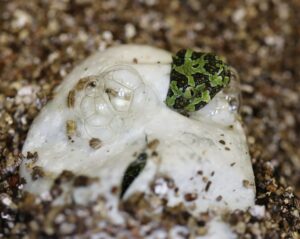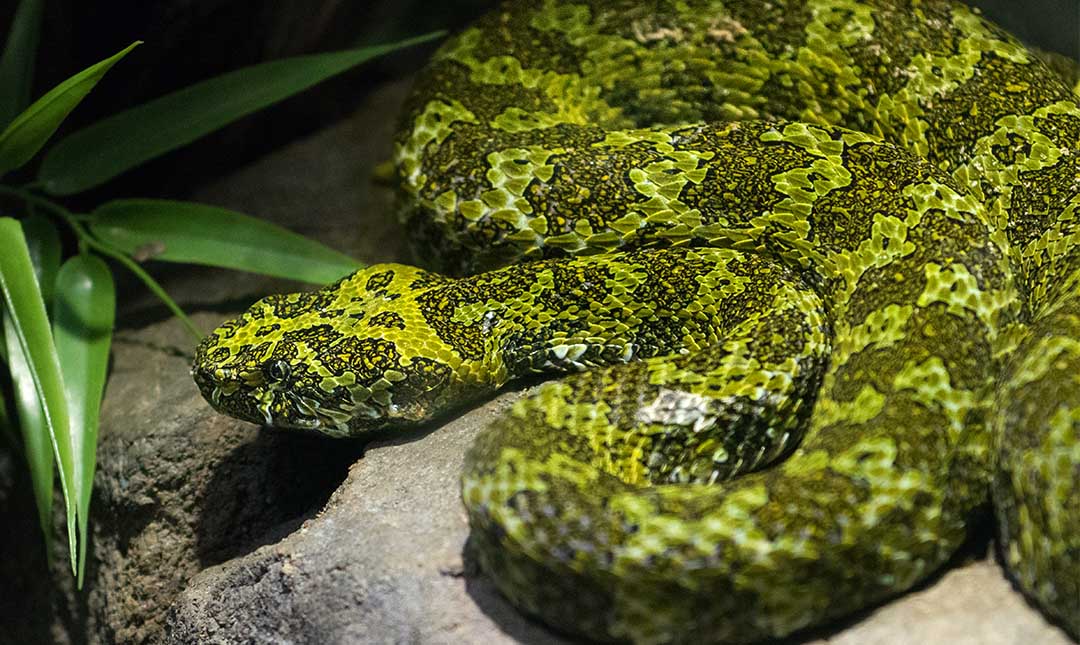About
The Chinese mountain range where this viper is found was given the name Mangshan due to its snake-like shape. The species was discovered in October 1989, and recent surveys have shown it to be almost extinct in the wild.
The last four inches of this snake’s tail are bright white in contrast with bright green with brown blotches of the rest of the body. The snake will wriggle the tip of its tail, which resembles a worm, in order to lure prey. They hunt at night on the forest floor using heat-sensing pits located near their noses to detect warm-blooded animals. Pit vipers are venomous ambush predators who wait near animal trails. When prey approaches, they strike quickly, release the victim, and wait for the venom to act. Venom also helps snakes digest their meal. The long fangs that deliver the venom can be folded back when not in use. This snake’s venom can lose its potency in sunlight, so melanin (which absorbs UV rays) is heavier in the scales around the glands that produce it.
Females lay up to 27 eggs in leaf litter and will guard the nest until the eggs hatch. Once the young hatch (after about 50 days), the mother leaves. The primary threats to this beautiful snake are illegal collection for the pet trade, habitat loss, and collection for food. The Mangshan viper population is estimated at about 500 individuals. Breeding programs have been established in China, Germany, and the U.S. to maintain assurance populations.


Habitat
A very small range in the southeast Chinese provinces of Hunan and Guangdong. Mangshan pit vipers live in the mountain forests.
Diet
This snake’s diet includes frogs, birds, and rodents.
Physical Characteristics
This snake can grow up to seven feet in length and weigh up to 11 pounds. Mangshan pit vipers have a heavy body with a pronounced triangular head. Lifespan is estimated at 25 years.



